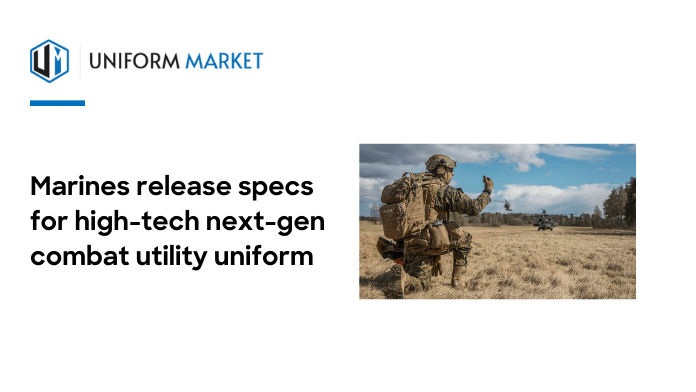The Marine Corps has taken a significant leap towards obtaining a combat utility uniform that builds in fire resistance, reduces visibility, and enhances comfort. In May, they released a highly anticipated request for proposals outlining the essential features and requirements for the new garments.
The solicitation for the Marine Corps’ next-generation combat utility uniform, known as MCCUU, was made public on May 12. This announcement allows interested companies to submit their proposals and fabric samples within a month. The objective is to design a uniform that retains the Corps’ distinctive Marine camouflage pattern while incorporating advanced technologies and improved fabric.
In 2021, the Marine Corps publicly expressed its interest in a new utility uniform that would combine the durability of the standard uniform with the fire protection provided by the flame-resistant organizational gear (FROG) uniform.
This initiative was driven by the aim of achieving significant cost savings, as reported by Military.com. Currently, the Marine Corps spends $89 for the regular utility uniform and $184 for the flame-resistant organizational gear. To address this, Marine Corps Systems Command officials set a target of not exceeding $105.60 per next-generation Marine combat utility uniform.
The recently released solicitation imposes a limit of $22 per yard for uniform costs, which translates to approximately $110 per uniform. By adhering to this cost constraint, the Marine Corps seeks to strike a balance between affordability and incorporating the desired features into the new uniform.
Next-Gen Marine Corps Uniforms to Integrate Advanced Flame-Resistant Technologies
According to the recently released solicitation, the next-generation Marine Corps uniform will incorporate enhanced flame-resistant properties. The uniform will either utilize no-melt, no-drip technology, which provides protection to the wearer by preventing the fabric from melting or dripping when exposed to flames, or it will possess self-extinguishing capabilities, allowing the fabric to stop burning once the fire source is removed.
With the introduction of the next-gen uniform, the Marine Corps aims to provide even greater protection against flame-related hazards, ensuring the safety and well-being of its personnel in combat environments.
Additionally, the new uniform will incorporate a progressively significant tactical attribute: signature management. The Marines’ patented MARPAT camouflage, which is highly proficient at concealing soldiers from the naked eye, emits a distinct glow when viewed through short-wave infrared optics.
Since at least 2012, the United States military has been diligently working on developing materials, including special fabrics and dyes, to counteract this revealing effect.
Beyond the added technology features, the uniform will feature improvements in “breathability, comfort and durability,” according to solicitation documents.
The new uniform will maintain its lightweight quality, weighing no more than 7.5 ounces per yard, and it will be designed to air-dry within 85 minutes or less. It will be required to meet high standards of air permeability to ensure proper breathability, and it will incorporate advanced moisture management or water-repellent fabric technologies, akin to state-of-the-art athletic gear.
Considering previous complaints from Marines regarding trousers that tore at the seams, the next-generation uniforms will undergo rigorous testing to ensure they can withstand pressure without tearing. Manufacturers will also need to demonstrate that the fabric does not pill or degrade after repeated wash cycles.
Like the current utility uniform, the next-gen combat utility uniform will also be treated with insect repellent, providing up to 96% protection against bites.
Marine Corps Systems Command officials have declined to disclose information regarding the timeline for Marines to evaluate new uniform items or the specific fielding schedule, citing these details as predecisional. However, the solicitation does provide some insights.
According to the documents, up to six purchase orders will be granted to acquire fabric with varying flame-resistant properties. The Systems Command will then down-select and purchase up to 700 yards from selected vendors to construct uniforms for testing and evaluation purposes.
The experimental Marine Corps Combat Utility Uniforms (MCCUUs) will undergo several months of Field User Evaluation (FUE) in an early 2024 hot, humid, and wet environment. Simultaneously, laboratory testing will be conducted to determine the suitability and acceptability of the uniforms in operational settings.
A final decision on which uniform to procure will be made sometime in fiscal year 2025. At present, no information has been released regarding the specific dates for fielding.
As per the solicitation, the Marine Corps intends to acquire approximately 270,000 next-generation blouses and trousers through the Defense Logistics Agency, which will require approximately 1,350,000 yards of fabric.
Also read: Bold Metrics and Jaanuu Collaborate to Redefine Fit for Healthcare Professionals













